I just realized that many of my readers have no idea what Objective Force Warrior or its follow-on, Future Force Warrior are all about and I’m afraid some may think it’s something new. Objective Force Warrior was one of many Soldier Modernization Programs going back to Soldier Integrated Protective Ensemble in the early 90s to 21st Century Land Warrior to simply Land Warrior and then OFW in the early 00s. You could go on for days talking about what they wanted it to do. If you want to really delve into it, download a vision document below.
For our purposes, the system was intended to integrate with the conceptual Objective Force that would have provided the Army with a new family of ground and air vehicles under Future Combat System. Like FCS, it wasn’t fielded.
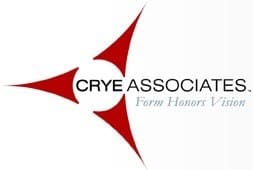 What’s important to you is that it’s where Crye Associates made their bones and many staples of modern Soldier Systems spun out from that program. Working in conjunction with other firms such as Juggernaut Defense and Artisent (which spun off Ops-Core) as well as large contract system integrators, Crye was responsible for the clothing, load bearing and armor components of this Soldier Digitization effort.
What’s important to you is that it’s where Crye Associates made their bones and many staples of modern Soldier Systems spun out from that program. Working in conjunction with other firms such as Juggernaut Defense and Artisent (which spun off Ops-Core) as well as large contract system integrators, Crye was responsible for the clothing, load bearing and armor components of this Soldier Digitization effort.
As with most of these programs, lots of money is poured into the software and comms portion and relatively little effort and funding is put towed the clothing and individual equipment components. With many of these programs, actual development of the system’s digital operating environment becomes virtual and during program reviews and Congressional dog and pony shows, Crye’s efforts became the face of the program. They produced prototypes that a Soldier could wear and that looked unlike anything else out there. I’d say that they kept that program moving for as long as it did. The clothing and armor developed by Crye was something you could actually see and lay your hands on, Eventually, after a name change to Future Force Warrior and facing actual combat in multiple theaters, the Army let the project drift away with the C4I component transitioning over time to Nett Warrior.
Industrial Design house Crye Associates founded Crye Precision based on the success of their work on FFW and after commercialization, caught the eye of the Special Operations community. The rest you should know.
Ultimately, four critical Soldier Systems technologies find their roots in FFW and with Crye:
MultiCam Camouflage Pattern – It began life as Scorpion for use with FFW but Crye Precision refined the pattern for commercial use and later provided modified variants of the pattern for both the UK (Multi Terrain Pattern) and Australia (Australian MultiCam Pattern). In 2009, the US Army selected MultiCam for use in Afghanistan as the Operation Enduring Freedom Camouflage Pattern (OCP). In 2010, Crye Precision developed Woodland and Arid patterns for the US Army’s Camouflage Improvement Effort. They were selected as finalists along with three other companies. In late 2013, Crye Precision introduced four new patterns to complement the decade old Transitional pattern: Alpine, Arid, Black and Tropical.
Combat Uniforms – The concept of producing a shirt that combines a moisture wicking torso with heavy duty sleeves for wear with armor systems was unheard of prior to OFW. The same goes for garments with integrated knee and elbow protection. Now, these concepts are accepted as state of the art.
Crye Armor Chassis – Crye Precision’s armor chassis took an entirely fresh approach to body armor, combining special, ergonomically shaped armor plates in such a way that allowed movement. It has been adopted for use by niche forces and up has influenced armor design.
Close Fitting Modular Combat Helmets – While the material science wasn’t quite there yet when the OFW/FFW helmet demonstrators were built, several companies produced enhanced combat helmets over the years including Crye Precision’s AirFrame that fits very close to the contour of the head.
ID Magazine did a great article on Crye’s participation in the project which we offer here for historical purposes.
Tags: Crye Precision, FFW, OFW


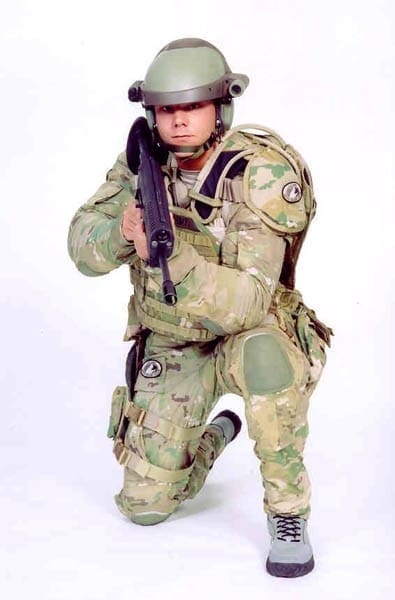
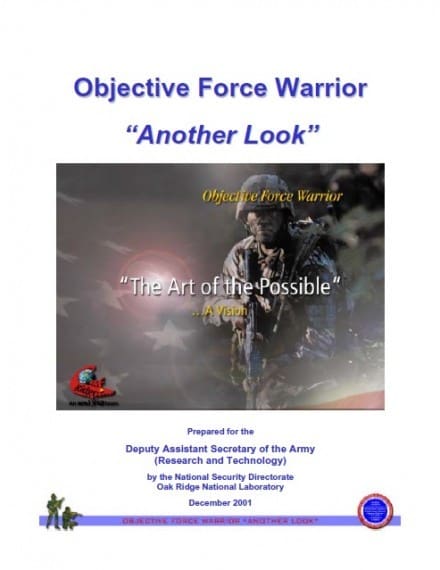
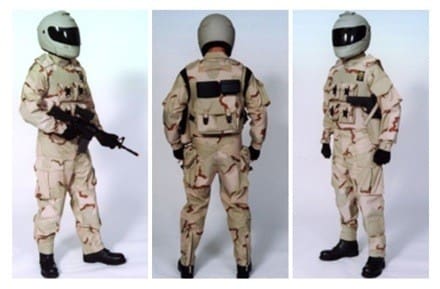
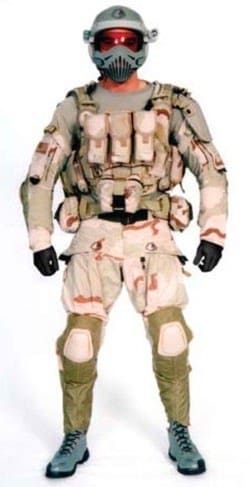
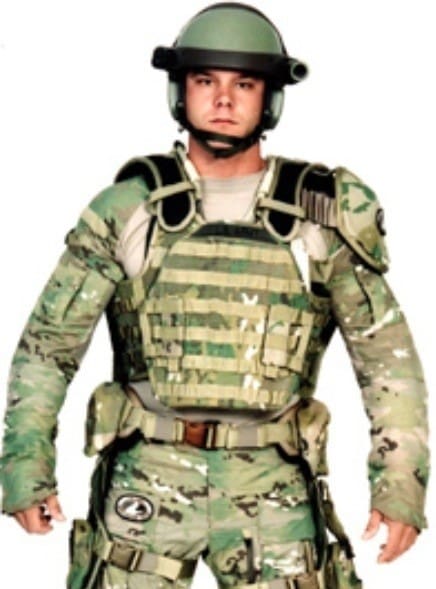
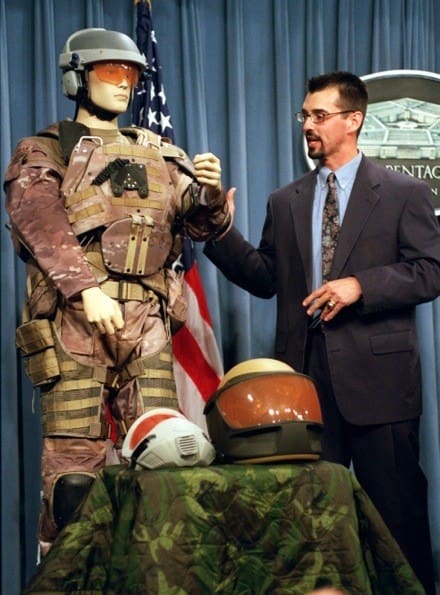

Blast from the past! I remember following Land Warrior in the 90s and early 2000’s. Before Crye jumped in (at least before I saw any uniform/ TA-50 tech from the program) I had an uber hard-on for the OICW and OCSW for Land Warrior. I vividly remember the first time I saw the above picture of Scorpion taken at the Pentagon. The entire ensemble was leaps and bounds ahead of what I was used to at that point in time. Spent many days looking over every inch of that photo in “high res”. I think I can honestly say that Crye is the modern equivalent to John Browning/ Hiram Maxim for gear and uniforms.
Also, as a question… It just hit me after all these years…Are the boots in the very top picture Oakleys? Sure appear to be. I’d love to pick up a pair in that grey and black color pallet (hint hint nudge nudge Oakley).
This again? We just went over this yesterday.
Yea my bad. I hadn’t been on for a few days and didn’t see it until 5 mins after I posted this while working my way back in articles.
I know this doesn’t add too much to the conversation, but the last couple times I’ve seen that first picture it reminded me of the MI from Starship Troopers (the film adaptation, not Heinlein’s book).
I said the same thing yesterday!
I have always wondered: if the UK / Aussie MoDs had not selected Crye variants for uniform patterns, would the US Army have pulled the trigger on the whole camo improvement effort? I know that sounds juvenile, but I always got the feeling that the Army /DoD went “but wait that was our idea”!
It has to be disheartening yet justifying to the PMs up there to have spent the time, effort, and resources only to see their technologies adopted in mass by others, and yes OCP went live, but that sure felt like it was a bottom up effort of dragging a solution out vice a programmatic decision.
So many things we look at as “everyday individual gear” spawned out of this program. It’s still amazing to see.
The move to OCP was Congressionally driven.
Murtha did it
Yes, he did. One of the few things I can attribute to the guy that I agree with.
Not to get totally off subject, but did anyone check out the very last name on the panel of the Composite Vision Team? Mr. Jim Channon-AKA Lt. Col. Jim Channon, creator of the 1st Earth Battalion! (read- Men Who Stare At Goats).
I knew I saw his artwork before. A lot of his ideas bled threw in this presentation, especially the “warrior culture” ethos.
Yes, it was not lost on me. I’ve written about him a couple of times.
Right, I meant they are sister companies.
Oops, wrong reply
I remember reading that a company called Artisent created the mock helmets above for the FFW program. If I recall correctly, the same people who ran Artisent branched off and created Ops Core (known for their FAST helmets) after the program was cancelled.
They are one and the same company.
Right, I meant they are sister companies.
I wish the Artisent site was still up just to look at the concept art and images.
What exactly were the devices on the helmet supposed to be ?
I read that they were supposed to be mock ups of a high-definition camera, inmage intensifier/ thermal viewer, and a laser designator. I believe all of the information/data collected from the sensors mentioned above was supposed to be displayed on a HUD integrated into the helmet.
Yeah, it kinda looks like the front end of a peq-15
OFW was a great program for all three design consultancies (Crye Associates, Artisent, and Juggernaut Defense) that worked in conjunction with each other to innovate new solutions for uniforms, armor, load-carriage, weapons, helmets and sensors, communications, and the advent of the PAN (personal area network) to bridge the gap between the sensors and power and bring critical battlefield information to the squad level, all while maintaining a 50LB or less dismounted kit…
Funny story,
I work next office to a guy who still has the “experimental” CRYE body armor in DCU. I tried it on and it feels really good to have it. It has two camelback attached to it on both sides of the back panel. Also it has the belt to go with it.
Very, very interesting. I tried, but he wont sell it.
Takes some photos of it and we’ll share it on SSD
Excellent trip in the Wayback Machine. Reminding me (along with a couple of other folks) of the Mobile Infantry to come, I had to take a nostalgic re-read through some of the Air Force 2025 documents. I’m all twitchy for my chip implant, so I can be doing my part…
Good concepts, but could you imagine the intel S–t storm that would happen if one of those suits were captured in the field?
I served in the Infantry Battle Lab during the whole Land Warrior, Future Force Warrior amd Objective Force Warrior period of the early ’00’s. It was like the discovery channel everyday. SOOOOOO glad they were represented in the FCS initiative but kept as separate stand alone programs because a lot of that pie in the sky FCS propaganda was plain dangerous and would have wasted a lot of money and killed a lot of people if it was ever fielded. (e.g. knowing where the enemy is never replaces the need for armor on you or your vehicle, we miss and the bad guy will fool us).
Saved and linked a cheesy but interesting promotional video to an essay on the current BS surrounding TALOS. http://gruntsandco.com/iron-man-suits-without-hype/
Thanks for the blast from the past SSD.
+2
To add to what majrod said, lets also remember that these concepts were tied into the idea that with magical technology we would have “perfect situational awareness” – and yes the briefings said “perfect” as if there was no question about it. Obviously that never happened.
Like many of the people here I also watched this meandering process. The key point (in my mind) is that the individual soldier is ultimately kitted out to fight the war our leaders would prefer to fight, i.e. where we have complete overmatch and only the bad guys die. That never happens either.
I guess I’m being cynical, but DoD, and the Army in particular, have a long history of big ideas that fail miserably in actual combat. If you are familiar with the Army’s Apache Helicopter “Deep Attack” doctrine (and it’s failure in OIF) you know what I mean.
I guess the good news is that nuggets of good ideas eventually mature into something worthwhile.
Neat post!
SSD, do you have enough information and photos to do a series on major OFW concepts, with each focusing on a different piece of kit and its intended purpose?
I think it’d be very interesting.
+1
I remeber being a kid and seeing the black gitup FFW in either Popular Science or Popular Mechanics (I wasn’t a cool kid).
Tastes like nostalgia.